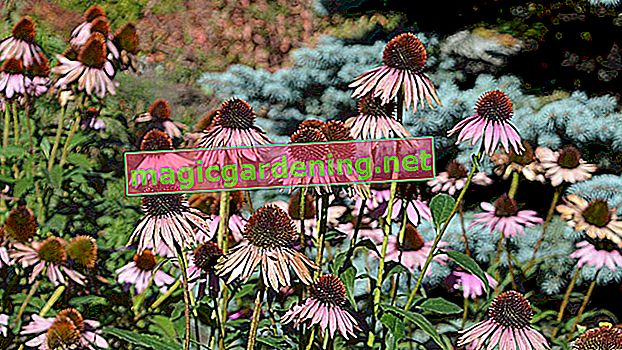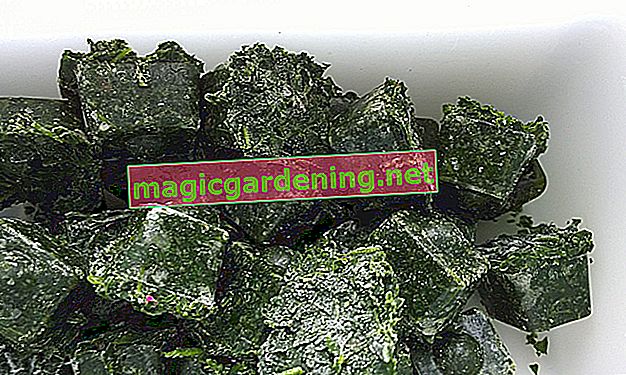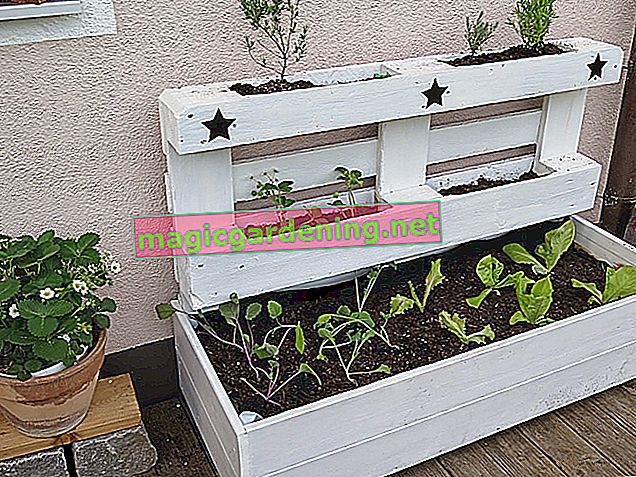
The choice of the tree
Before planting, of course, you first have to choose a suitable tree, although you cannot put just any species in your garden. In addition to personal preferences, these criteria also determine the suitability or non-suitability of the desired tree species for the targeted location:
- Size of the planting area and the expected size of the tree
- Proximity and nature to other plants
- Site conditions and brightness
- Soil condition
- desired use
also read
- How to properly plant a fruit tree - location, soil, planting distance
- Planting boxwood correctly - location, soil, planting and propagation
- How to care for a jacaranda tree - tips on care
In particular, the available space, the brightness of the location and the nature of the soil are extremely important factors as to whether the tree planted there can grow healthily. Large trees such as oaks, chestnuts, pines etc. need a lot of space and therefore belong in a large garden - just like most standard fruit trees, by the way. Sun worshipers should not be planted in the shade, and wetland plants (such as alders or rhododendrons) should not be planted in dry, sandy soil.
The right season
Container plants can in principle be planted all year round, as long as the ground is not frozen. Nevertheless, planting in autumn or spring is recommended, as freshly planted young trees have a high water requirement and can therefore dry out quickly if they are planted during the hot summer months. Bare-rooted trees, on the other hand, are only placed in the ground when there is little vegetation.
Necessary preparations
If the location, tree species and season are correct, you can finally start planting. Before doing this, however, the soil must first be loosened thoroughly. If you have purchased a shallow root, you have to dig up a large area of the planting area and thoroughly crumble up the soil. Deep-rooters, on the other hand, need deep cultivation so that their roots can grow unhindered. These measures are particularly important in the case of highly compacted soil, as is often found in newly built houses. However, caution is also advised in older gardens: some of them have found buried rubble and other waste here that must be removed. Afterwards it is often necessary to replace the floor, for example if asbestos has been buried.
Planting a tree - a guide
Before planting directly, you should put the tree in a bucket of water so that its roots can soak up water. Meanwhile, you do the preparatory work and dig the planting pit.
Digging the planting pit
Use a spade to dig out the planting pit, which should be about twice the size of the root ball of the tree to be planted. Thoroughly loosen the bottom and walls of the pit with a suitable tool, such as a claw or hoe. Mix the excavated material with a generous shovel of compost and a generous handful of horn shavings (€ 6.39 on Amazon *) and fill some of it into the pit.
Insertion of the plant stake
Now drive the plant stake into the edge of the pit. This serves to stabilize the tree and ensures that it is not knocked over again with the first gust of wind. Felling the tree after planting it does not make sense, as its roots can be accidentally damaged - with the result that growth suffers and certain diseases can occur, such as fungi.
Planting the tree
Now put the tree in the planting pit. Plant it exactly as deep as it was in the nursery or in the container. You can recognize the planting depth by the darker discoloration of the trunk. In the case of grafted trees, first see where the grafting is. If the grafting point is at the root neck, you should plant the tree so that it is at least ten centimeters above the ground. Otherwise, either rootstock or noble rice can take root from it, so that the desired growth properties determined by the rootstock are gone. Fill in the substrate and gently tread on it. Tie the tree to the post, if possible with a ribbon made of bast or coconut fiber. The rope is looped around tree and pole in figures of eight,whereby the trunk must not be constricted.
Don't forget to water and fertilize!
Freshly planted trees need a lot of water. Therefore, form a pouring edge along the planting pit and around the trunk, so that a hollow is created. Fill this well with water, which gradually seeps into the ground. Then mulch the tree grate with bark mulch, lawn clippings or similar materials so that the moisture stays in the ground and does not evaporate. You should also water the young tree during longer breaks in the rain.
Plant pruning
Since roots are always destroyed or cut when planting and this creates an imbalance between the above and below ground parts of the tree, you have to cut back the crown accordingly. Otherwise the remaining roots could no longer adequately supply the crown, so that the tree would partially dry up. The type and extent of the pruning depends on the type of tree and its intended use. Fruit trees, for example, are cut back differently than ornamental trees in order to promote the development of fruit wood.
Tips
If possible, choose native tree species, as their ecological value for the entire environment is significantly higher than an imported wood, with which native insects and birds cannot do anything here.








